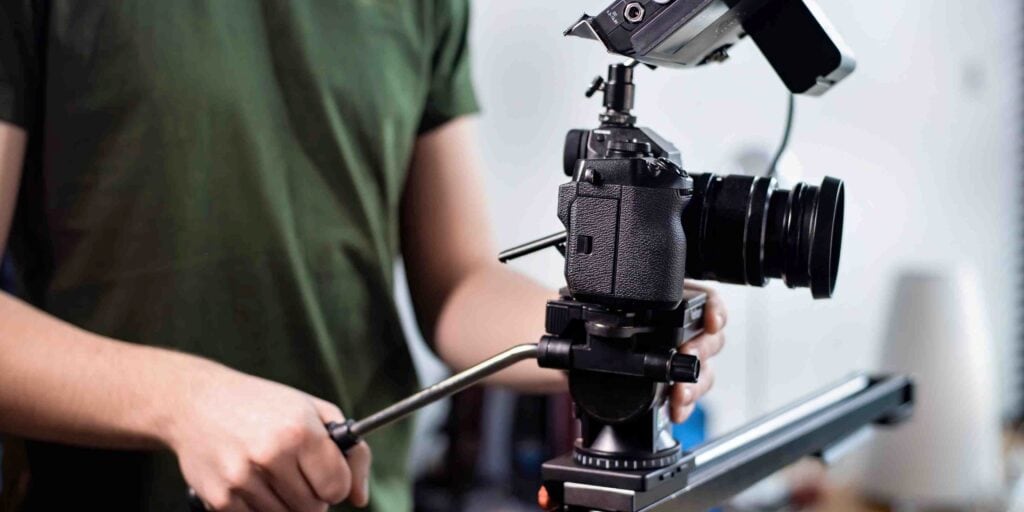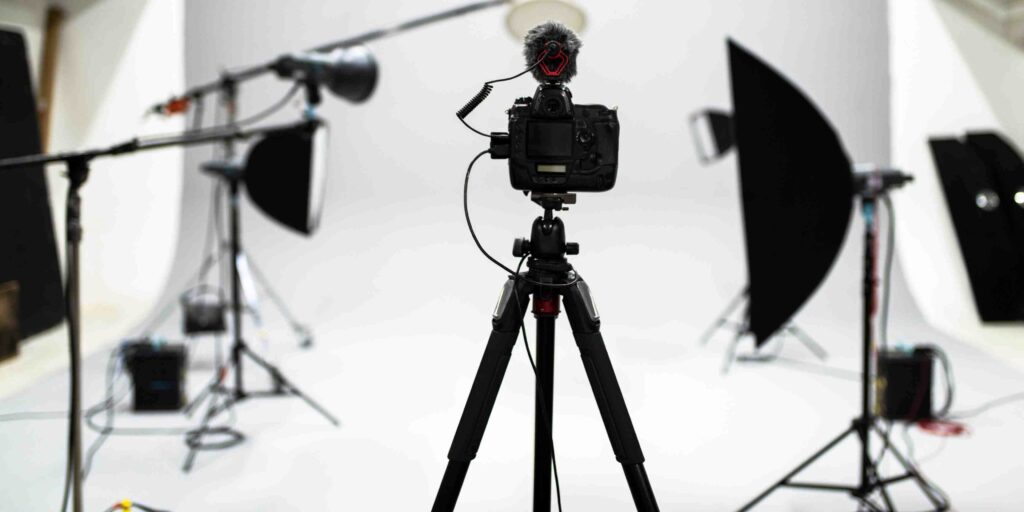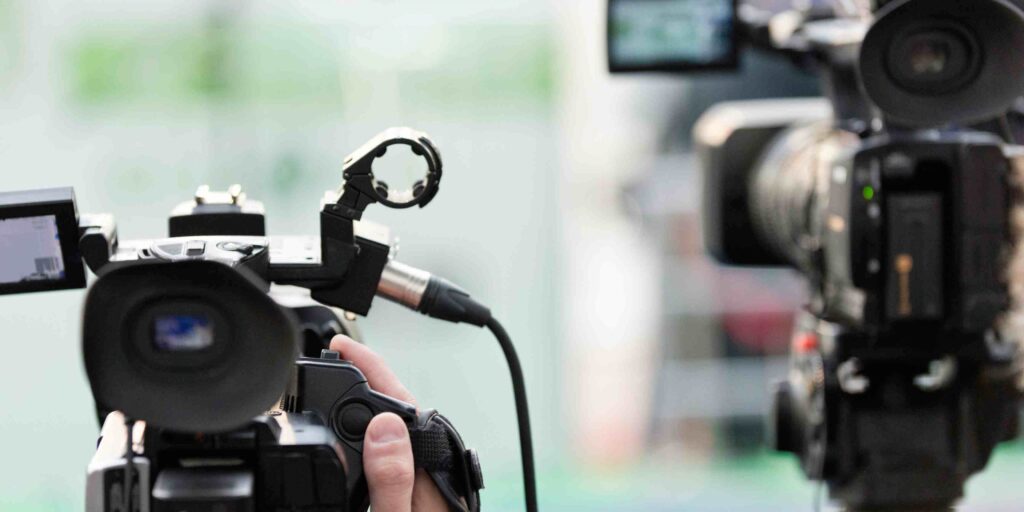Live streaming has become an essential part of content marketing and communication for many businesses, institutions, and individuals. With high-quality audio and video streaming, this multimedia platform allows your target audience to engage with your live stream at any time from anywhere in the world. But producing a successful live stream requires more than just basic technical knowledge—it also involves making sure all elements are working together effectively to create a quality broadcast that will captivate viewers. When considering how to maximise your live stream, it’s important to look into professional production services, as they can help you achieve superior results in terms of audio and video quality and overall production value.
In this article, we’ll provide an overview of what professional production services entail and discuss the benefits of using such services for your live stream. We’ll also cover some key points involved in evaluating which type of service provider is right for you: selecting the best equipment and technology; setting up a studio; optimising props, lighting, cameras, and microphones; adding special effects such as virtual sets; maximising audience engagement through effective directing techniques; collaborating with professionals during pre-production and post-production phases; as well as tips on turning good live stream into great ones.
The Benefits of Using Professional Production Services for Live Streaming

Using professional production services to stream your live events offers various advantages that go beyond simply setting up a camera and hitting record. With experienced professionals on board, they can guide you through the entire streaming process, from planning and pre-production to shooting, post-production, and delivery. This gives you access to specialised expertise including video engineering, lighting design, audio mixing, directing techniques, and any special effects or virtual sets needed to create an engaging experience for viewers. Such services also provide additional resources in the form of backup equipment and staff members if something unexpected should happen during the event—minimizing potential delays while ensuring that your programme runs smoothly without interruption. Other benefits include enhanced security measures, higher quality visuals due to HD cameras, faster deployment time since everything is handled beforehand, a lower risk of technical difficulties due to thorough testing prior to going live, and more efficient use of time since all necessary personnel can be hired at one time instead of piecing things together piecemeal down the line.
Evaluating Your Needs to Determine Which Professional Services You Need
Before investing in professional production services for your streaming project, it’s important that you evaluate your needs to determine what type of services will be most beneficial. This includes considering factors such as the size and complexity of your project, the desired quality level for both audio and video elements, budget constraints, the timeframe for delivery of the finished product, the types of equipment or special effects you’ll need access to, whether or not additional personnel are needed during the pre-production and post-production phases, etc.
Once you have a clear idea of what type of production service is best suited for your project, then it’s time to move on to choosing the right live streaming service provider.
Choosing the Right Live Streaming Service Provider
When selecting which professional production services to invest in, it’s important that they meet all of your technical requirements while also providing a timely solution within your budget range—which can be difficult when dealing with different companies vying for business in this space. To make sure you select a reliable partner who will deliver higher-quality results than expected, consider looking into their portfolio and past projects and reading online reviews from previous clients. You should also evaluate how well established they are within their industry, as this can help ensure that they have the necessary resources available if something were to go wrong during production or delivery stages. Additionally, ask them to provide a detailed breakdown of their services and associated costs so that you know exactly what is included in the package.
Setting Up Your Studio for Maximum Efficiency
Once you have chosen the right professional production services provider for your project, it’s time to work on setting up your studio for maximum efficiency. This includes items such as lighting, props, cameras (including green screens if needed), microphones, and any other equipment or materials necessary for your particular programme. It’s important to be aware of all technical requirements before making any decisions and to keep everything organised so that when it comes time to shoot or stream, everything goes according to plan without issue. Additionally, there are various tools available online that can help automate tedious tasks such as cueing videos and clips during post-production phases, which can save both time and money in the long run by streamlining the entire process from pre-production through delivery stages.
Optimising Your Studio Set With Props And Lighting

When setting up a studio set prior to live streaming an event or programme, one key aspect often overlooked is proper lighting, which significantly impacts both the visuals captured by HD cameras and the audio recorded by microphones used for live streaming purposes. It’s important that each subject be properly lit to ensure that they appear clearly on screen and can be heard correctly by viewers. Additionally, props should also be considered when planning out your studio setup, as this gives the stream an extra layer of depth, which helps engage viewers’ interest and make them feel more connected with what is going on. This could include items such as physical signs or banners in the background, plants or decorations for a splash of colour, or even virtual sets to give things a unique twist—all of which can help create a memorable experience for those tuned in to watch.
Utilising HD Cameras and Audio Equipment for Superior Results
When it comes to professional production services for streaming purposes, using high-definition (HD) cameras is essential if you want superior results while also capturing sharp video images with vibrant colors and clarity. While there are various camera models available on the market today, some features you may consider looking into include: wide dynamic range (WDR); low light performance; auto focus; shutter speed capabilities; frame rates; white balance; built-in microphone capability; and other audio input options such as XLR inputs or Bluetooth connectivity—all of which will impact the final image quality captured by your cameras during live streams. Additionally, headphones should also be worn while streaming to monitor the audio feed and make necessary adjustments in real-time as needed.
Adding Virtual Sets and Other Special Effects to Make Your Stream Stand Out
Another key component when it comes to maximising your live stream is utilising special effects such as virtual sets, which have a higher production value than traditional studio setups. This involves incorporating CGI elements into the broadcast that allow for dynamic backgrounds and exciting visuals that help capture viewers’ attention—adding another layer to how content unfolds during the programme. Virtual sets are highly customizable and can be tailored specifically for each project depending on what type of effect you want to achieve (i.e., science fiction, 3D environment, etc.). Additionally, you may also add captivating graphics and animations, which further enhance viewer engagement by creating an immersive experience that they otherwise couldn’t get elsewhere.
Maximising Audience Engagement Through Effective Directing Techniques
The way in which content is presented during a live stream plays an important role in capturing audience interest and keeping them engaged throughout its duration. Achieving this requires proper directing techniques from experienced professionals who understand various aspects such as talking points, cues based on reactions or comments received, interaction with guests, any additional video or graphics added to the stream, and the overall flow of the broadcast. Having this type of expertise on board can help bring your programme to life by guiding it in a manner that keeps viewers captivated until its conclusion.
Collaborating With Professionals During The Pre-Production And Post-Production Phases
Partnering up with experienced professionals during the pre-production and post-production phases helps ensure that all elements are properly tested beforehand, which minimises technical issues encountered while streaming and reduces stress levels prior to going live—which is essential as they are responsible for overseeing every aspect involved with preparing an event or program, such as: cueing video clips or graphics; setting up lighting; positioning cameras; adjusting audio levels; managing audience engagement activities (i.e., polls, Q&As); making sure props and other special effects work correctly; etc. By collaborating with those who understand how each element works together to create a seamless experience when producing high-quality broadcasts, you can be sure things go smoothly without any unexpected surprises once you’re tuned into the actual stream itself.
Tips for Turning a Good Livestream Into a Great One
Now that we’ve gone over various components involved in maximising your live streams through professional production services, here are some tips that you can apply to
make sure your broadcast is a success:
- Opt for HD cameras or higher-resolution alternatives if possible.
- Ensure proper lighting is used throughout the stream and use physical or virtual props to help draw attention.
- Utilise external audio equipment instead of relying solely on built-in microphone capabilities.
- Test your setup ahead of time and check all audio and video connections beforehand as well.
- Be aware of any special regulations or laws related to streaming that may be in effect in certain areas.
- Incorporate additional technology, such as virtual sets, graphics, etc., when applicable, to add extra depth to the experience.
- Collaborate with experienced professionals during the pre-production and post-production phases for maximum results.
FAQs:
When producing a successful live stream, there are various technical skills involved depending upon its overall complexity—ranging from basic knowledge about setting up cameras and microphones correctly to working with HD video signals, utilising different tools for editing and adding effects, understanding network infrastructure requirements for streaming in high definition (HD), being able to troubleshoot if issues arise during production or delivery stages, etc. Additionally, those working with live streaming should also be aware of any special laws or regulations applicable in certain areas.
Maximising the reach of your live stream requires implementing a comprehensive marketing strategy to help create awareness about their upcoming broadcast. This could include things such as sharing it on various social media platforms prior to going live, utilising promotional materials (i.e., banners, posters, etc.), advertising through targeted advertisements or paid influencers who have a significant following base, sending out “teasers” regarding what will be discussed during the stream itself—all while making sure that all relevant details, including date and time, are clearly visible when broadcasting so viewers know when they should tune in.
The type of software or hardware necessary for producing professional-grade broadcasts will depend upon its complexity level, such as whether you’re looking for something basic involving only camera(s) or microphones or creating something more complex that involves incorporating virtual sets or other special effects elements into the mix. Generally speaking, some items commonly used include HD cameras capable of capturing high-quality visuals; microphones for audio recordings; a high-speed internet connection to ensure smooth streaming with no lag time; as well as any other software or hardware necessary to achieve desired results. Additionally, having experienced professionals on board who understand how all these elements work together is also essential for achieving maximum efficiency and putting out higher-quality programming.
When it comes to producing live stream, having a capable production team that can properly oversee every aspect involved in pre-production through delivery phases is essential if you want optimal efficiency with minimal errors or issues encountered during the process. This typically involves multiple individuals, ranging from: video engineers responsible for setting up cameras and lighting correctly to directing technicians who oversee the flow of content being presented during broadcast stages to editors responsible for adding effects or altering certain clips before going live, etc.—all while collaborating with one another in order to enhance engagement levels and create an overall quality experience that viewers will find both captivating and enjoyable.
In order to stream in HD (high definition) form, your network infrastructure must meet certain requirements, such as: providing adequate bandwidth speeds capable of sustaining constant data transfers between server(s) used for streaming purposes and the end-users watching it; maintaining stable connections to avoid disruptions during broadcast stages, etc. Additionally, as mentioned earlier in this article, external audio/video equipment should also be used instead of relying solely on built-in capabilities from cameras or microphones, as this will significantly improve overall image quality captured—resulting in a sharper visual presentation with vibrant colours and clarity for those tuned in to watch.
Utilising professional-grade microphones and cameras is highly recommended when producing live stream if you want higher-quality visuals than what could be achieved using built-in microphone capabilities found on most consumer models available on the market today—as these minimise background noise while offering better audio conservation and dynamic range. The same can be said about HD video signals, which capture crisp images with vibrant colours that help bring content being presented alive—allowing viewers at home to feel like they’re part of the experience itself, even though they’re tuning in via virtual platforms rather than being physically present inside studio setup.
The type of editing tools required will depend upon what type of effects you’re looking to incorporate into your live stream—such as incorporating graphics or animation that requires knowledge of motion graphic design programmes; adding subtitles or captions, which can be done through software such as Adobe After Effects; editing video clips prior to broadcast by utilising programmes like Apple Final Cut Pro X, etc. Additionally, those working with virtual sets may also need access to 3D modelling applications in order to create realistic environments for viewers tuning in at home.
When it comes to choosing a streaming platform for your broadcasts, making sure it meets various industry standards (security-wise) is important if you want viewers tuning in from around the world without having any personal data compromised during transmission stages. This includes factors such as: verifying encryption protocols when transmitting images or video over networks; using secure connections when sending sensitive information between server(s) and end-users watching content being presented on their devices; double-checking firewall configurations and other general security settings found within the control panel before going live—all while staying aware of any updates released by particular platforms used (i.e., YouTube Live, Twitch, etc.) pertaining to such matters as well.
When producing a live stream, it’s important to take into consideration any relevant laws or regulations applicable in certain areas, as this could have an impact on the stream’s overall success. For example, the Children’s Online Privacy Protection Act (COPPA) is a U.S.-based law that states that personal information collected from anyone under 13 years of age cannot be shared or used for marketing purposes without parental consent—so if your content involves such individuals, then you must make sure appropriate measures are taken beforehand in order to remain compliant with these standards set forth by the governing bodies involved. Additionally, other countries may also have their own laws and regulations pertaining to live streaming content, so being aware of these beforehand can help ensure your programme runs smoothly and without issue whenever possible.
Incorporating various types of additional technologies during production phases helps keep viewers engaged and adds value to the overall presentation—such as incorporating virtual sets, adding graphics or animation elements, implementing interactive features during broadcasts (i.e., polls, Q&A sessions), utilising augmented reality (AR) and/or virtual reality (VR) elements, or even incorporating various types of analytics, which can provide valuable feedback regarding how well your programme is performing amongst its target audience. All of these tools can enhance the overall experience while also improving engagement levels when producing live stream, which in turn helps further increase their reach when it comes to achieving desired results.

